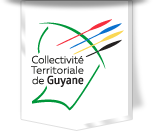
French Guiana is an EU Outermost Region recognised by the article 349 of the TFEU. It has been a single territorial collectivity since 1 January 2016.
Only EU region located on the northern coast of South America, it shares borders with two nations: Brazil and Suriname. Excepting the coastline, 94% of the territory is covered with Amazon Forest.
French Guiana’s economic activity is structured around traditional sectors such as agriculture or fishing, along with the significant tertiary activity. Biodiversity, wood-energy industry and gold mining are also developing sectors.
Space activity accounts for 16% of the GDP (2016) and the Guiana Space Centre employs about 1700 people. It is there, in Kourou, that rockets Ariane have been launched since 1979 (and then SOYOUZ and VEGA), making French Guiana the European spaceport.
An example of project developed by using space technologies is SEAS (Surveillance de l’Environnement Amazonien par Satellite). SEAS is a station which allows to exploit directly the pictures acquired by earth observation satellites, Spot, and Envisat, with the objective to create a reference centre for the knowledge and the follow-up of the dynamics of the Amazonian and Caribbean environment. This project is the result of a partnership between CTG (Collectivité Territoriale de Guyane), IRD (French Research Institute for Development), CNES (National Centre for Space Studies), ESA (European Space Agency), French Guiana university, and GDI (Guyane Développement Innovation).
A few regional data:
POPULATION: 262 527 inhabitants in 2016
SURFACE AREA: 83 846 km²
DENSITY: 3 inhabitants per km²
MAIN CITIES: Cayenne, Kourou, Saint-Laurent du Maroni

